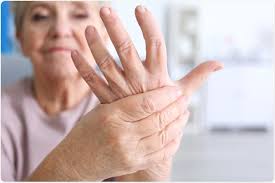Rheumatoid Arthritis Frequently Asked Questions

Arthritis is a general term for any condition that affects the joints or tissues surrounding them. There are hundreds of different types. Get some rheumatoid arthritis CME (continuing medical education) with these FAQs.
What is Rheumatoid Arthritis (RA)?
RA is an inflammatory disease where your immune system attacks healthy cells in your body by mistake. This causes painful swelling in the affected areas.
Where Does RA Hit the Hardest?
It mainly attacks many joints at once. It especially likes the hands, wrists, and knees. The tissue damage caused by RA can invoke chronic pain, lack of balance, and physical deformity.
What Are the Signs of RA?
Sometimes, the symptoms will flare up, and other times, they’re in remission. Some warning signs include pain, aching, tenderness, swelling, or stiffness in multiple joints, weight loss, fever, fatigue, and weakness.
What Causes RA?
There is no known, isolated cause, but there are a ton of risk factors. Genetics are a big factor, but so it the environment. There are some characteristics that increase the risk, such as age, sex, inherited traits, smoking, number of children birthed, early life exposures, and obesity. There is also something that can decrease the risk, and that’s breastfeeding.
How is RA Diagnosed?
A medical professional will review symptoms, conduct a physical exam, and order X-rays and lab tests to diagnose RA. Like anything, it’s best when RA can be diagnosed early, preferably within 6 months of the onset of symptoms. Suppressing the inflammation early can reduce the damaging effects.
What Are the Complications of RA?
Rheumatoid arthritis has many social and physical consequences, such as pain, disability, and premature death. It can also cause premature heart disease, obesity, and employment loss or restrictions.
How is RA Treated?
It can be managed with medications and self-management practices. Disease-modifying antirheumatic drugs slow the progression, which helps prevent joint deformities. There are also biologicals used as a second-line treatment.
Along with the medications, patients can manage RA with strategies that help relieve pain and improve joint function, such as getting physically active, going to effective physical activity programs, joining a self-management education class, stopping smoking, and maintaining a healthy weight.
How Can Being Physically Active Help RA?
Being physically active can help relieve RA pain from stiffness, gives you more energy, and puts you in a better mood because of elevated endorphins.
If you want to learn more, enroll in a rheumatoid arthritis CE (continuing education) courses. Becoming your best self means taking charge of your health by understanding the conditions that impact you.
Post Your Ad Here
Comments